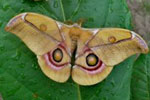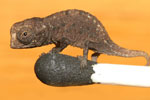Madagascar split from the supercontinent of Gondwana about 150 million years ago. As a result, most of the living creatures in Madagascar are unique to the ecosystems in the island. Madagascar: The Last Inheritor of Gondwana is a documentary that does an excellent job of showing Madagascar’s magnificent biodiversity, but falls short in delivering Madagascar’s “clear” and “urgent” message.
Massimo Simion, nature photographer and filmmaker, is the narrator. Simion speaks in Italian and the voice-over is in English. Simion takes the viewers through all of Madagascar’s breathtaking landscapes, including: the rain forests in the north, the rocky plateau in the central region, the spiny forests in the south, the mangrove forests in the coast line, and even the depths of the ocean in Madagascar’s seabed and coral reefs. Simion also does a great job discussing the island’s different fauna and flora biodiversity.
Simion’s love and closeness to nature is contagious and engaging; Simion climbs trees and mountains, feeds the animals, catches snakes and crocodiles, and goes swimming. The film’s urgent message calls for us to remain vigilant “so that every creature, every plant, and every place with a life develops in a natural way, [and] is not damaged by human activity.” Simion’s actions are contradicting this message. Many times, Simion closeness made the animals appear uncomfortable which made me as a viewer also feel uncomfortable. I found myself hoping to see less of Simion and more of Madagascar and its creatures.
As an introduction to Madagascar’s natural beauty, the photography in the film is wonderful. The information offered in the film is basic and many times left me hoping for more. In general, the documentary seems to be lacking a clear structure and an overarching narrative. That it is necessary to protect the unique and unrepeatable biodiversity of Madagascar and the rest of the world should be the message of the entire film, yet it only appears at the end. Simion’s seems to be more concerned in telling the viewer how to get close to the animals without getting yourself hurt. The film is great in showing the wonders of Madagascar, but for viewers looking for something deeper, it misses the mark.
How to order:
Madagascar: The Last Inheritor of Gondwana
Narrated by Massimo Simion
Studio: Belmondo Entertainment
Genre: Documentary
Language: English
Duration: 72 minutes
Related articles
Innovative conservation: wild silk, endangered species, and poverty in Madagascar

(02/20/2012) For anyone who works in conservation in Madagascar, confronting the complex difficulties of widespread poverty is a part of the job. But with the wealth of Madagascar’s wildlife rapidly diminishing— such as lemurs, miniature chameleons, and hedgehog-looking tenrecs found no-where else in the world—the island-nation has become a testing ground for innovative conservation programs that focus on tackling entrenched poverty to save dwindling species and degraded places. The local NGO, the Madagascar Organization of Silk Workers or SEPALI, along with its U.S. partner Conservation through Poverty Alleviation (CPALI), is one such innovative program. In order to alleviate local pressure on the newly-established Makira Protected Area, SEPALI is aiding local farmers in artisanal silk production from endemic moths. The program uses Madagascar’s famed wildlife to help create more economically stable communities.
Photo: World’s smallest chameleon discovered in Madagascar

(02/15/2012) Scientists have discovered four new species of super-tiny chameleons in Madagascar, according to a new paper in PLoS ONE. The smallest of the new species, Brookesia micra, is found only on the small island of Nosy Hara and has been dubbed the smallest chameleon in the world, measuring from nose to tail 29 millimeters (1.14 inches) at its largest. Scientists believe it represents a notable example of island dwarfism.
Scientists create high resolution, 3D maps of forests in Madagascar
(02/15/2012) A team of scientists has created the first high resolution maps of remote forests in Madagascar. The effort, which is written up in the journal Carbon Balance and Management, will help more accurately register the amount of carbon stored in Madagascar’s forests, potentially giving the impoverished country access to carbon-based finance under the proposed REDD (Reducing Emissions from Deforestation and forest Degradation) program.